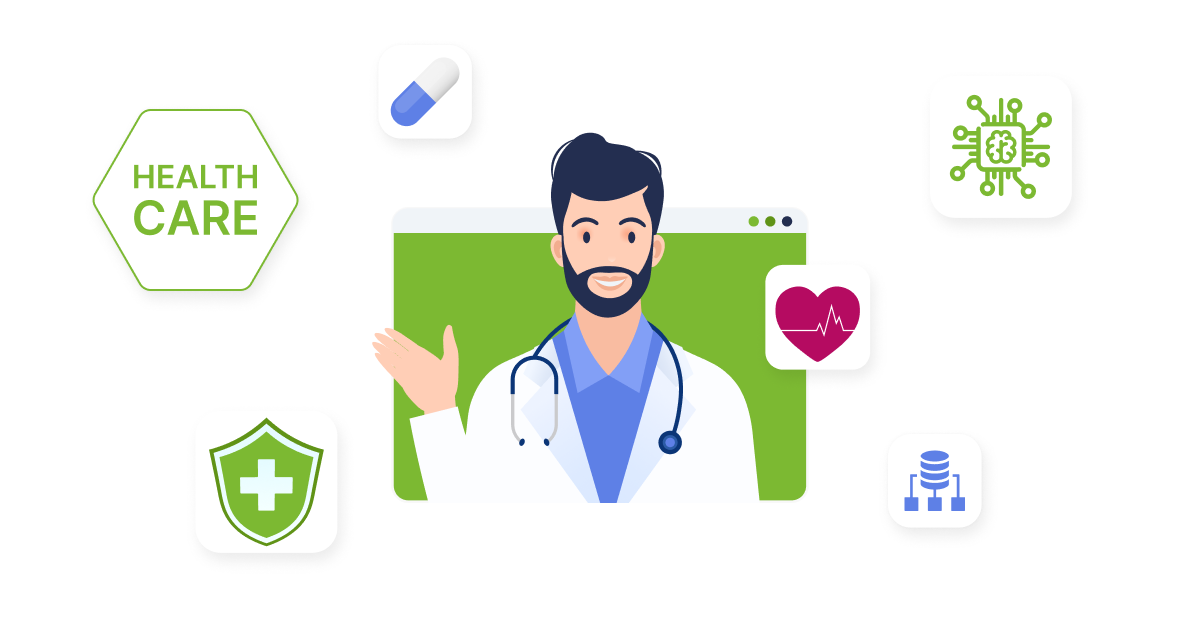‘Waterfall’ Model in IT Healthcare: Terms and Niches of Implementation
Health Information Technology is a specific area of the IT industry. It includes the creation, design, testing, implementation, usage and maintenance of information systems that shrink distance between patients and the healthcare industry. Automatization and interoperability of healthcare management processes help to improve personal patient care, public health, low costs, reduce errors, and increase efficiency in healthcare providers (managing, equipment, tools, methodology of observation and influence, financing, etc.).
We should admit that healthcare is not only a question of the patient and a doctor or hospital. This industry involves a lot of stakeholders: clinics, pharmacies, health research institutes, manufacturers of tools and equipment, insurance companies, government bodies. All of them are interested in collecting, storing, analytics of data, background and resources for research and implementation of information technologies and medical innovations.
Demands for Critical Niches of IT Healthcare
In 1960`s, improvements in networking and computers brought to mind the use of computer technologies in medicine. With time computers` price has become lower, and reliability of information systems has increased (and continues), which brings to widespread engagement of technologies in healthcare. In some countries it becomes not only a desire of separate clinics or related organizations but also a requirement at the legislative level. So, in 2009 federal law of the US motivated healthcare and medicine organizations to digitize its process and data storage.
The Health Information Technology for Economic and Clinical Health Act (HITECH) spent billions of dollars to “promote and expand the adoption of health information technology”. They start with electronic health records (EHRs). Later there were electronic medical records (EMR), personal health record (PHR), picture archiving and communication systems (PACS) and a lot of other used and efficient systems.
Medical reform in Ukraine was carried out in 2016 under the heading of the Ministry of Health Protection of Ukraine. Besides financial improvement, the innovation also took place in the medical information system that automates the management of healthcare, doctors, laboratories, hospitals, and the maintenance of electronic medical records. Such information products as Medstar, Helsi.me, Likari founded the basic level of eHealth — central database — information system of health care, which in the future will unite all documents and medicine processes of healthcare of Ukraine.
FYI, Software Development Hub made a significant contribution to Ukrainian and UAE health tech by providing software development of medical information systems, hospital management software, EHR applications and databases. Over 9M patients and 38K physicians use products we developed, and the healthcare providers we serve cover 15% of national markets.

Healthcare solutions we have been building since 2015:
- EHR & EMR Software
- Medical Information Systems
- Hospital & Practice Management Systems
- Patient Portals & Apps
- Registry Management Software
- Dental ERP Software
- e-Prescribing Apps
- Internet of Medical Things
- PACS & DICOM Software
- Patient Remote Monitoring Apps
- Telehealth & Telemedicine Software
- eHealth & 3rd-Party Services Integration
- Data Migration (moving to the cloud)
The same process of digitization of the medicine industry you can find in other countries, which means that is part of government policy.
Waterfall Model: History and Phases
Every process of software development has next stages or phases of SDLC:
- Planning and requirements analysis
- Defining requirements and tasks
- Designing and product architecture
- Development
- Testing
- Deployment
- Maintenance
Depending on its providing IT projects may use different Models of SDLC.
One of the first known is ‘Waterfall’ or a linear-sequential life cycle model.
The American computer scientist Winston Walker Royce invented and described it in 1970, and in 1976 scientists Thomas Bell and Thomas Thayer gave it a name. At first, ‘Waterfall’ was used in the creation of any software, but then the Agile model appeared. Now the ‘Waterfall’ model is used in the aircraft industry, military or space industries, financial sector and medicine. ‘Waterfall’ is a good choice, because these areas need well-defined processes and deadlines, and this is the essence of the cascade.
The specific feature of the ‘Waterfall’ model is that every next stage can`t start if the previous one is not completed. This software development model is quite rigid and has strict rules. It clearly defines the timing of the passage of each stage. But there is also a drawback: it is very difficult to take a step back. Making changes to an existing project is very expensive and problematic. Sometimes impossible, and change management means starting from the first stage.
Specific Terms and Principles of ‘Waterfall’ Implementation
The ‘Waterfall’ model is suitable only for projects that are clearly scheduled, there is a complete understanding of what is being created, for what purposes and what requirements are set. The advantages of the ‘Waterfall’ Model is about straight scheduling of stages, tasks and timeterms, and also departmentalization and control. Each stage of development is provided in strict order.
Gantt Chart is an appropriate tool for ‘Waterfall’ management.
Implementation of ‘Waterfall’ Model for IT Healthcare
Of course, IT Healthcare is not only about records and data storage. In general it includes next kinds of information products:
- Health records
- Electronic prescription records and services
- Interconnected hospital networks
- Health-related smartphone apps
- Connected devices and systems, such as surgical tools, high quality equipment, laser-guided, etc.
- Online patient applications for checking in, making appointments, etc.
- Medical imaging solutions such as picture-archival and communication systems
Thereby, discussing information systems in healthcare, we can highlight such general categories: collecting and storage (database), hospital networks (interoperability), healthcare managing applications (web and mobile) and patient connected devices and systems.
Read also: User Story and Acceptance Criteria: Description and Recommendation
The category of patient connected devices and systems includes development of hardware and software of medical equipment and tools. Some of them are for external usage, for example, ultrasound machines, tonometer, defibrillator. Others are used for surgery or implantation and prosthetics. Talking about such devices and systems for homecare, preventative treatments, early diagnosis and others, according to recent research, in the last three years alone, there have been over 450,000 patents filed and granted in the medical devices industry.
All of them are configured straight to health and life. Development of such IT products needs high-level responsibility, expertise and experience not only in IT but also in medicine as a domain. There is no right for any mistake. All requirements and technical documentation should be comprehensive, clear and fielded. As you can see, we are talking about the ‘Waterfall’ model.
According to GlobalData Patent Analytics, the latest innovation developments are in remote monitored infusion pumps, remote nerve stimulation devices, wireless gastric stimulation devices, remote health monitoring networks, smart wireless physiological sensors, remote diagnosis biosensors, medical emergency response systems and many others.
Thus, ‘Waterfall’ Model for such development should follow next rules:
- Requirements are clear and fixed.
- Technical documentation is well done and includes comprehensive description of future IT product
- Technology is understood
- No ambiguous requirements
- Sufficient resources with required expertise, experience and knowledge are available for development and support of the product.
‘Waterfall’ is not flexible, cannot accommodate changing requirements. But on the other hand, in such medical IT projects there are high amounts of risk and mistakes can cost a life. Bugs discovery will start development from the very beginning, which, in our opinion, is justified.
Software Development Hub is a team of like-minded people with extensive experience in software development, web and mobile engineering, custom enterprise software development. We create meaningful products, adhering to the business goals of the client. Main areas of development: сustom healthcare software development., accounting, education.
Categories
Share
Need a project estimate?
Drop us a line, and we provide you with a qualified consultation.








